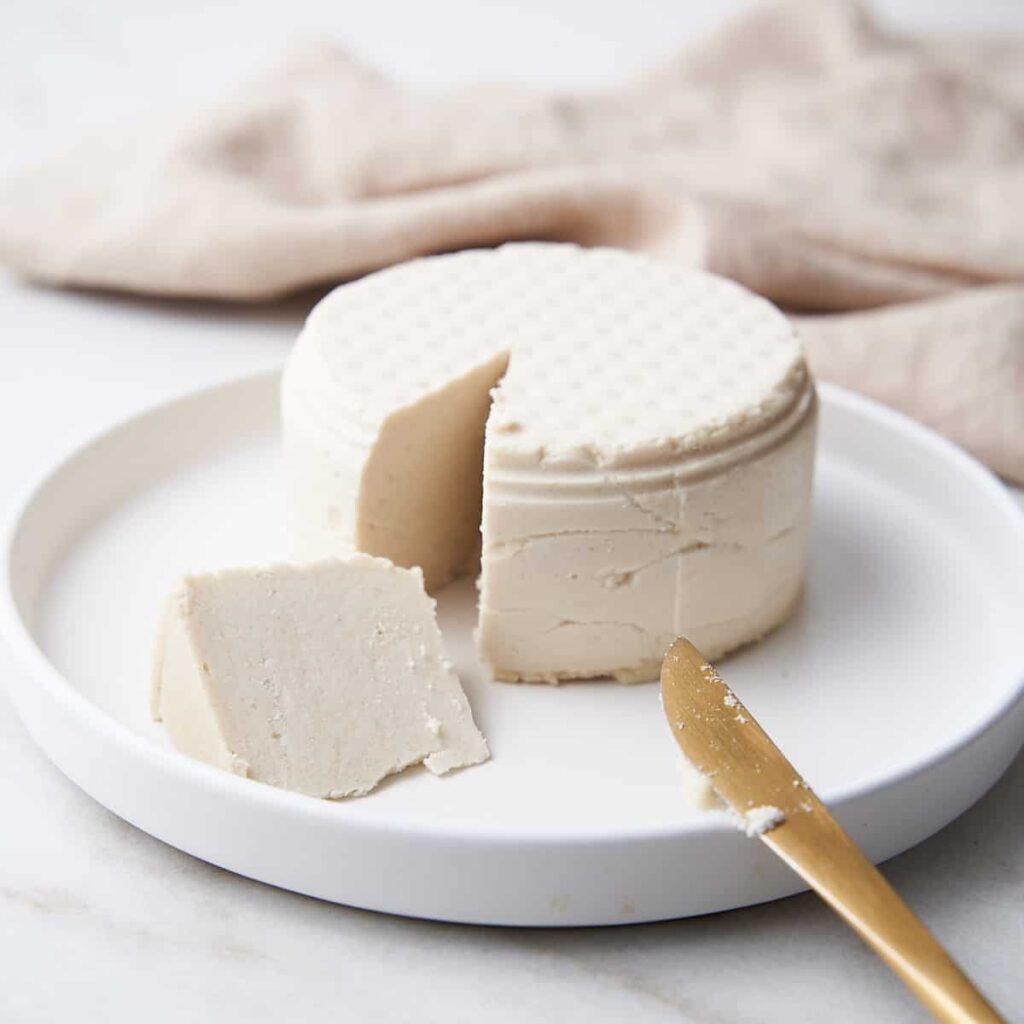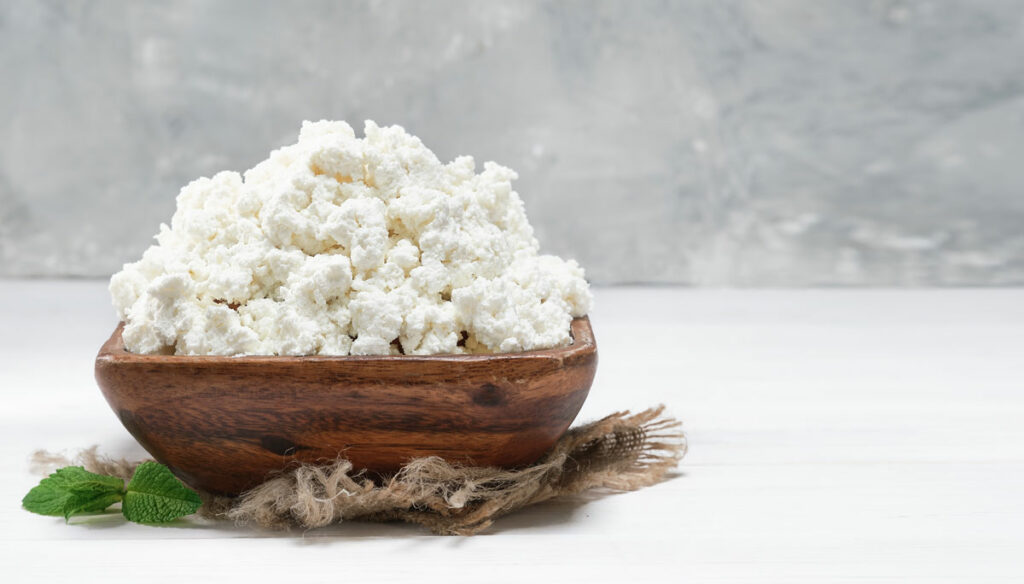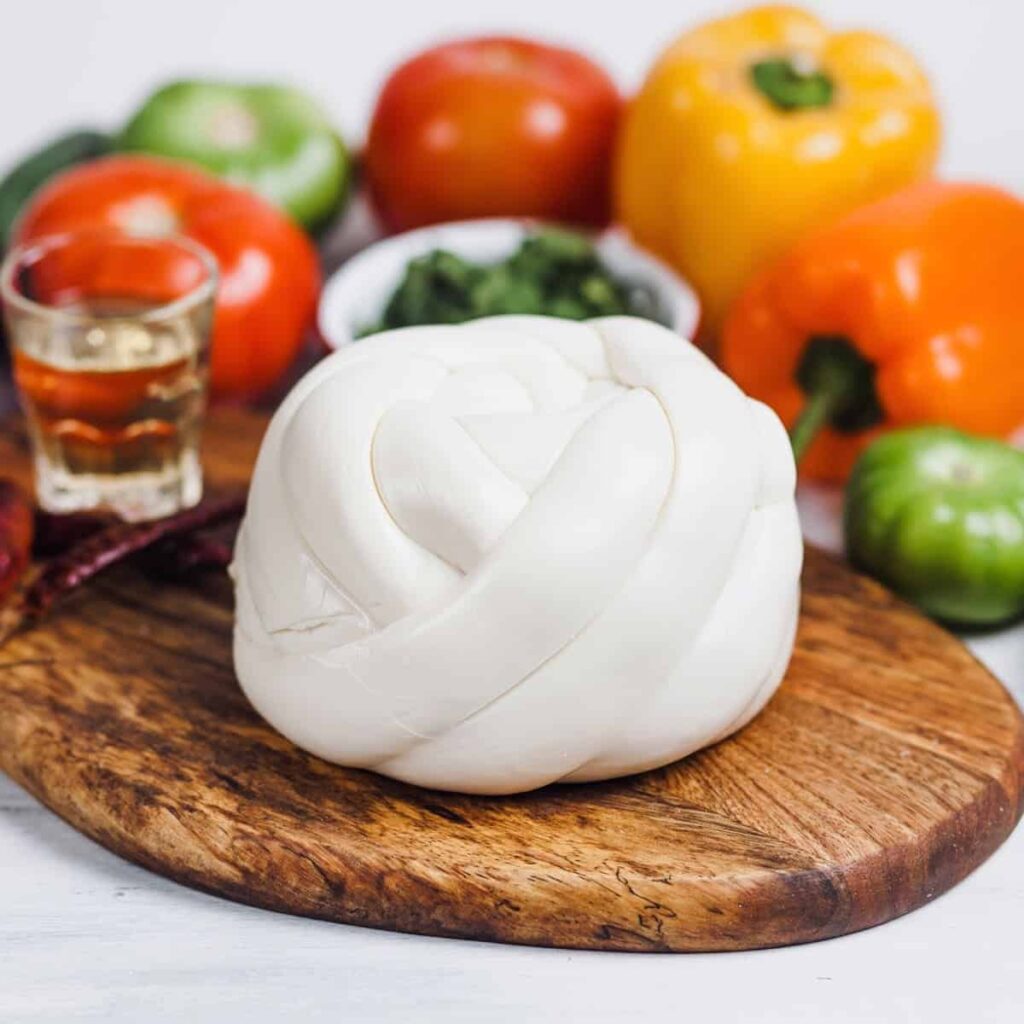10 Most Popular Cheeses Originated in Mexico

Cheese, a versatile and beloved ingredient, has found its unique expression in the cuisine of every culture around the world. And when it comes to Mexican gastronomy, cheese holds a special place, with an array of different varieties that reflect the rich diversity of this culinary tradition.
From the crumbly Queso Fresco to the ultra-melty Oaxaca, each type of cheese has its distinct texture and flavor profile that contributes to the delectable depth of Mexican dishes. This post will take you on a flavorful journey through the 10 most popular cheeses that originated in Mexico, shedding light on their characteristics, uses, and the regions they hail from.
The 10 Most Popular Mexican Cheeses (BEST)
| Cheese | Description | Tasting Profile |
|---|---|---|
| Queso Fresco | A fresh, mild cheese that’s a staple in Mexican cooking | Slightly salty, creamy, and mild with a crumbly texture |
| Cotija | A hard, crumbly cheese named after the town of Cotija in Michoacán | Salty and strong, often compared to the taste of feta or Parmesan |
| Queso Añejo | An aged version of Queso Fresco, it’s harder and stronger in flavor | Sharp, robust, and mildly tangy, with a firm texture |
| Requeson | This creamy cheese is similar to Ricotta, made from whey | Mild and milky with a slightly sweet aftertaste |
| Chihuahua | Also known as Queso Menonita, this semi-soft cheese originated in the state of Chihuahua | Mild and buttery, with a texture perfect for melting |
| Mexican Manchego | Inspired by Spanish Manchego, but made with cow’s milk | Semi-hard, buttery, and slightly salty, with a creamy mouthfeel |
| Oaxaca | Named after the region it comes from, this is a white, semi-hard cheese | Mild, creamy, and stringy like mozzarella, great for melting |
| Queso Blanco | A fresh, creamy cheese that softens when heated but doesn’t melt | Mild, milky, and slightly salty, with a firm yet creamy texture |
| Asadero | This smooth, semi-soft cheese melts wonderfully | Mild and buttery, with a velvety texture when melted |
| Adobera | Named after the adobe bricks it resembles | Mild, buttery, and smooth, excellent for baking |
1. Queso Fresco

- Milk Type: Traditionally made from raw cow’s milk or a combination of cow and goat’s milk.
- Taste: Slightly salty and mildly tangy.
- Texture: Soft, moist, and crumbly.
- Food Pairing: Crumbled over salads, tacos, or used in enchiladas.
- Wine Pairing: Pairs well with lighter white wines like Albariño or a light, fruity rosé.
- Read in-depth guide
Queso Fresco is a traditional Mexican cheese, its name translating to “fresh cheese”. This cheese is known for its mild, fresh, and slightly tangy flavor profile. It is often described as having milky notes, which can provide a balance to spicy dishes. In terms of texture, Queso Fresco is soft and moist, with a curd-like lightness.
It’s also noted for being semi-soft and crumbly, similar to feta or Indian paneer. Despite its softness, it does not melt, making it suitable for grilling in cubes or slices. It’s a staple ingredient in many Mexican recipes and is commonly used in Mexican cuisine.
2. Cotija

- Milk Type: Made from cow’s milk.
- Taste: Salty and robust, similar to feta or Parmesan.
- Texture: Hard and crumbly.
- Food Pairing: Sprinkled over beans, salads, and tacos.
- Wine Pairing: Complements well with robust red wines like Zinfandel.
- Read in-depth guide
Cotija is a traditional Mexican cheese, named after the town of Cotija in Michoacán, Mexico. Made from cow’s milk, it is recognized by its white color and firm texture. Best known for its salty taste, Cotija adds a distinct flavor to dishes. This cheese is dry to the touch and has a crumbly texture, often drawing comparisons to feta or Parmesan.
Its rich, tangy, and salty profile makes it a popular topping for various Mexican dishes such as soups, tacos, enchiladas, and salads. When not available, substitutes like Parmesan or feta can be used due to their similar characteristics. Despite its hard texture, there also exists a softer variety of Cotija, showing its versatility.
3. Queso Añejo

- Milk Type: Traditionally made from cow’s milk.
- Taste: Sharp, tangy, and slightly salty.
- Texture: Firm and grating cheese, similar to Parmesan.
- Food Pairing: Used as a topping for dishes like enchiladas, chiles rellenos, and tostadas.
- Wine Pairing: Goes well with medium-bodied red wines like Merlot.
Queso Añejo, translating to “aged cheese,” is a traditional semi-hard cheese from Mexico. It has a firm texture and is usually made from pasteurized goat’s milk, although it is now commonly made from skimmed cow’s milk. This cheese has a unique characteristic – it doesn’t melt, making it a great choice for baking or grilling. It’s often used as a topping, generously sprinkled over dishes like beans, tacos, enchiladas, and burritos.
Some variants of Queso Añejo, such as Queso Anejo Enchilado, are coated in paprika and Mexican chili powder, adding an extra kick of spice. Despite its firmness, Queso Añejo crumbles easily, making it a versatile addition to many recipes. Its aging process, which can last 12 months or more, contributes to its rich and savory flavor, appealing to those with discerning palates.
4. Requeson

- Milk Type: Made from cow’s milk whey.
- Taste: Mild and milky with a slightly sweet aftertaste.
- Texture: Creamy and spreadable, similar to Ricotta.
- Food Pairing: Used in desserts, spread on bread, or in pasta fillings.
- Wine Pairing: Pairs well with sweet wines like Moscato or a fruity Chardonnay.
- Read in-depth guide
Requesón is a distinctive Mexican cheese that resembles Italian ricotta in taste and texture. This cheese is soft, moist, and grainy, and is made from pasteurized whey from cow’s milk. Its taste can be described as salty yet creamy, with a slightly acidic note. Lower in fat compared to other cheeses, Requesón is versatile in its use. It can be spread on bread or used as a delicious filling base for both sweet and savory dishes, including crepes and spicy Mexican cuisines.
It’s also frequently used in salads, soups, and cooked dishes, offering a unique flavor profile. Some versions of Requesón are spiced up to add an extra layer of complexity to its flavor. Its homemade preparation is relatively straightforward, contributing to its popularity in Mexican households.
5. Chihuahua

- Milk Type: Made from cow’s milk.
- Taste: Mild and buttery.
- Texture: Semi-soft, perfect for melting.
- Food Pairing: Used in quesadillas, nachos, and other dishes requiring melted cheese.
- Wine Pairing: Complements well with light to medium-bodied wines like Pinot Noir or Sauvignon Blanc.
- Read in-depth guide
Chihuahua cheese, also known as Queso Chihuahua or Queso Menonita, is a traditional Mexican semi-soft cheese that originates from the Mexican state of Chihuahua. It’s made from pasteurized or raw cow’s milk and is commonly available in forms such as braids, balls, or rounds.
The cheese is known for its rich, buttery, and mild flavor, making it an ultimate choice for quesadillas and other dishes requiring melting cheese. Its distinct color, smooth texture, and non-processed ingredients contribute to its popularity.
While it’s safe to consume during pregnancy, it’s recommended to choose versions made from pasteurized milk.
6. Mexican Manchego

- Milk Type: Made from cow’s milk.
- Taste: Semi-hard, buttery and slightly salty.
- Texture: Creamy and smooth.
- Food Pairing: Ideal for sandwiches, casseroles, or melted over nachos.
- Wine Pairing: Pairs well with medium-bodied red wines such as Tempranillo.
Mexican Manchego is a popular cheese variant in Mexico, known for its mild flavor, high melting capacity, and versatility. It’s different from the Spanish Manchego, which is a hard-pressed cheese made with ewe’s milk. Mexican Manchego, on the other hand, is typically made from cow’s milk and has a semi-firm texture.
This cheese is rindless with a golden-yellow color and a slightly buttery taste. It often comes in slices, making it a convenient choice for various dishes. Despite some disputes over the name “Manchego” between Spain and Mexico, Mexican Manchego continues to be one of the most consumed cheeses in Mexico, appreciated for its adaptability to various culinary uses.
7. Oaxaca

- Milk Type: Made from cow’s milk.
- Taste: Mild and creamy.
- Texture: Semi-hard and stringy like mozzarella.
- Food Pairing: Perfect for melting in quesadillas, enchiladas, or chili.
- Wine Pairing: Complements well with light-bodied white wines like Pinot Grigio.
- Read in-depth guide
Oaxaca cheese, also known as queso Oaxaca or quesillo, is a semi-hard, low-fat Mexican cheese that is white in color and has a unique string-like texture. This cheese is crafted from cow’s milk and shares similarities with mozzarella due to its artisanal stretching curd process.
It’s famed for being the ultimate melting cheese, offering an ooey-gooey texture to a variety of dishes such as quesadillas, tacos, chile rellenos, nachos, molletes, and tlayudas. Oaxaca cheese is not just versatile in its applications but is also popular for its mild, buttery flavor that resembles a young Monterey Jack.
Given its string cheese characteristic, it can be literally unrolled, adding to its culinary appeal. This cheese is named after its place of origin, the state of Oaxaca in Mexico, and is one of the most consumed cheeses in the country.
8. Queso Blanco

- Milk Type: Made from cow’s milk.
- Taste: Mild, milky and slightly salty.
- Texture: Firm yet creamy, does not melt when heated.
- Food Pairing: Excellent in salads, crumbled over hot dishes, or sliced in sandwiches.
- Wine Pairing: Pairs well with light-bodied white wines such as Sauvignon Blanc.
- Read in-depth guide
Queso Blanco, Spanish for “white cheese,” is a creamy, smooth, and spicy cheese that is often used as a dip in Mexican cuisine. The cheese has a mild flavor and is usually made with white cheese and some sort of spicy pepper. Queso Blanco Dip is a popular dish served at Mexican restaurants, known for its rich and creamy texture. It can be easily prepared at home with only a few ingredients, typically including the cheese itself and milk.
The cheese is added to a large saucepan and heated over medium-low heat until melted, continually stirred to ensure a smooth consistency. This cheese dip is not just loved for its taste but also for its quick preparation time, often taking only about 5 minutes. Some even recreate versions of Queso Blanco from popular Mexican food chains like Chipotle, emphasizing its widespread popularity.
9. Asadero

- Milk Type: Made from cow’s milk.
- Taste: Mild and buttery.
- Texture: Smooth, semi-soft, and excellent for melting.
- Food Pairing: Ideal for quesadillas, pizzas, or melted on toast.
- Wine Pairing: Complements well with medium-bodied red wines like Merlot.
- Read in-depth guide
Asadero cheese, also known as Queso Asadero, is a semi-soft, mild, and creamy cheese originally from Northwest Mexico, particularly the province of Chihuahua. This cheese is loved for its smooth melting quality, making it a versatile ingredient in various Mexican dishes.
It is white, semi-firm, and made from cow’s milk through a pasta-filata (stretched curd) process, similar to Mozzarella. Often eaten with bread or tortillas, Asadero is sometimes confused with other Mexican cheeses like Oaxaca and Chihuahua due to its similar characteristics.
The cheese is 100% natural, made from whole milk without any added sugars or trans fats.
10. Adobera

- Milk Type: Made from cow’s milk.
- Taste: Mild, buttery, and smooth.
- Texture: Semi-soft, ideal for baking.
- Food Pairing: Great in baked dishes, on bread, or melted in casseroles.
- Wine Pairing: Pairs well with full-bodied white wines like Chardonnay.
Adobera cheese, also known as Queso Fresco in some regions, is a traditional Mexican cheese that originates from the western part of the country, particularly Jalisco. This fresh, soft cheese is named Adobera because its shape resembles adobe bricks. Adobera cheese has a mild, slightly tangy flavor and is made from cow’s milk.
It is versatile and can be used in a variety of dishes. It crumbles and shreds easily, making it an excellent choice for salads, soups, and sandwiches. However, it truly shines when used in quesadillas due to its melting qualities. Adobera is considered a staple food in Jalisco and is one of the best-known cheeses in Mexico.
Final Thoughts
As we wrap up our flavorful journey through the heart of Mexico’s dairy delights, it’s clear that the country’s cheese-making tradition is as rich and varied as its culture. From the soft, crumbly Queso Fresco that perfectly tops salads and tacos, to the rich and meltable Asadero that enhances the gooey goodness of quesadillas and enchiladas – each cheese has its unique charm.
The aged Cotija, often dubbed as the “Mexican Parmesan”, adds a sharp, salty note to dishes, while the stringy Queso Oaxaca, named after its place of origin, is a staple in Mexican pizzas and tortillas. Adobera, with its brick-like shape and mild flavor, shines in quesadillas.
Every region in Mexico contributes a distinct cheese to the national culinary tableau, reflecting the diversity and depth of Mexican cuisine. Whether you’re a cheese connoisseur or a curious foodie, these ten cheeses offer an array of textures and flavors that promise to captivate your palate. So, the next time you visit a grocery store or plan a Mexican-themed dinner, remember to include these cheeses in your list. Happy cheese hunting!
Also read:





